Confession. After graduation, I applied and was turned down for not one but three Smithsonian Institution internships. Sometimes I still feel sad when I think about all the things that I could have learned there. But, now the Smithsonian has made it possible for me and for anyone to have an educational experience with their collections and to assist them in making those collections more accessible.The various museums, libraries and archives associated with the Smithsonian Institution (SI) have set a goal to transcribe the diaries, interviews, field notes, etc. in their possession to facilitate research.
The Smithsonian Transcription Center seeks to engage the public in making our collections more accessible. We’re working hand-in-hand with digital volunteers to transcribe historic documents and collection records to facilitate research and excite the learning in everyone.
The instructions were easy to follow and the transcription interface simple to use. I was signed up and transcribing within 30 minutes!
I keep the tips page open in a second window while I am working in case I come across something tricky.
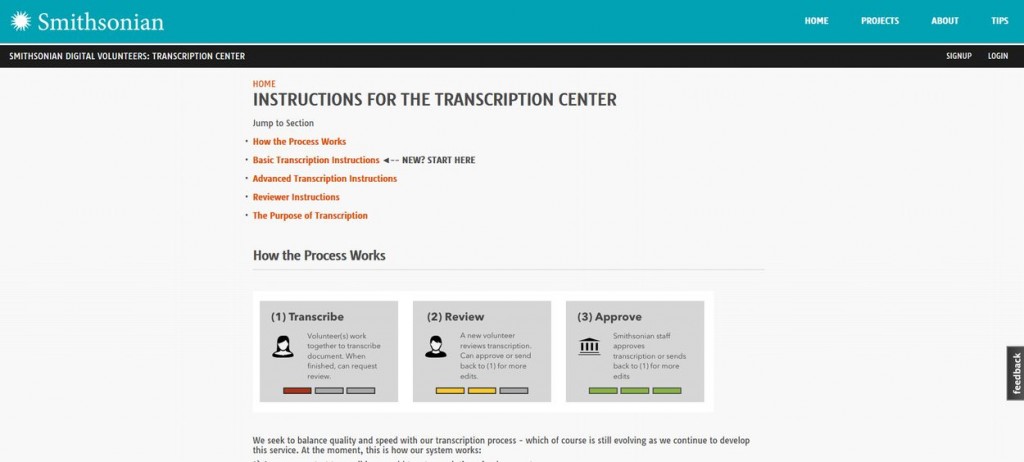
In this system, everyone is a reviewer and a transcriber. I love that there is no hierarchy, no score-keeping, and no competition.
The number one rule is “Have fun and treat each other with respect.” That sold me.
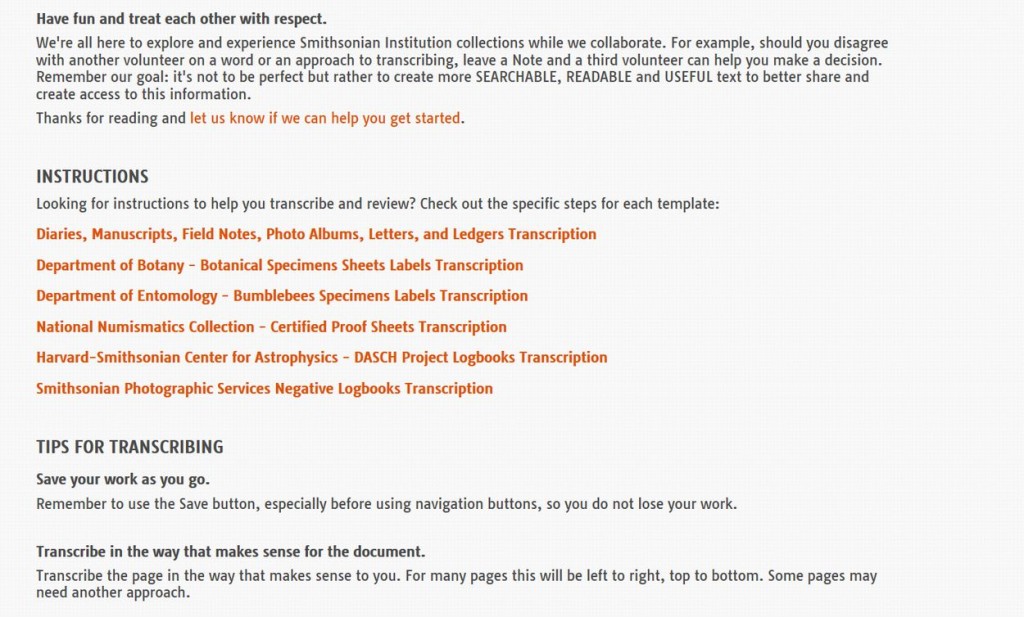
See the first line of instruction: Diaries, Manuscripts, etc.? Those are the tips that apply to my projects.
Another resource I have found to be helpful is samples of finished projects. For example, I clicked on completed transcriptions of artist Mary Cassatt’s letters to get a better idea for page formatting and for how other transcribers were using symbols. I’m very visual, so I learn from seeing finished work more easily than I learn from written instructions.
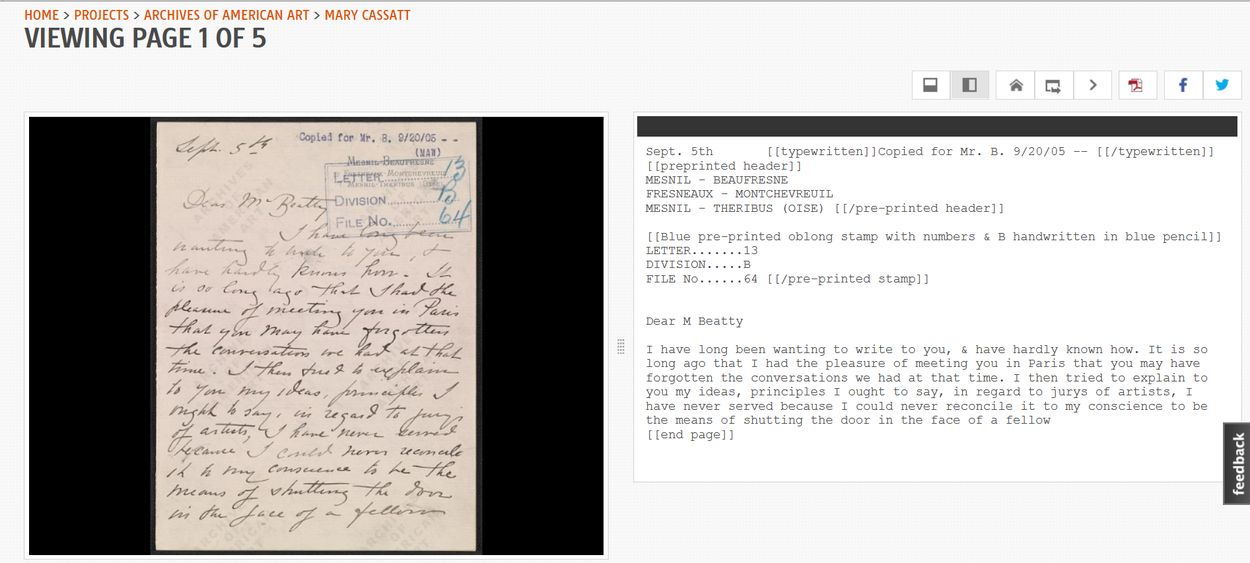
A completed letter in Mary Cassatt’s handwriting. I love that SI lets you leaf through finished work, new pages, and work ready for review without causing any disruptions to the process.
I plan on doing most of my transcribing for the Archives of American Art, but if you like science, history, or cultural heritage better, there is a project for you. Currently I am transcribing the diary of artist Joseph Lindon Smith (1863-1950) from his 1904-5 trip down the Nile River because Epyptian Art History was my favorite class in college.
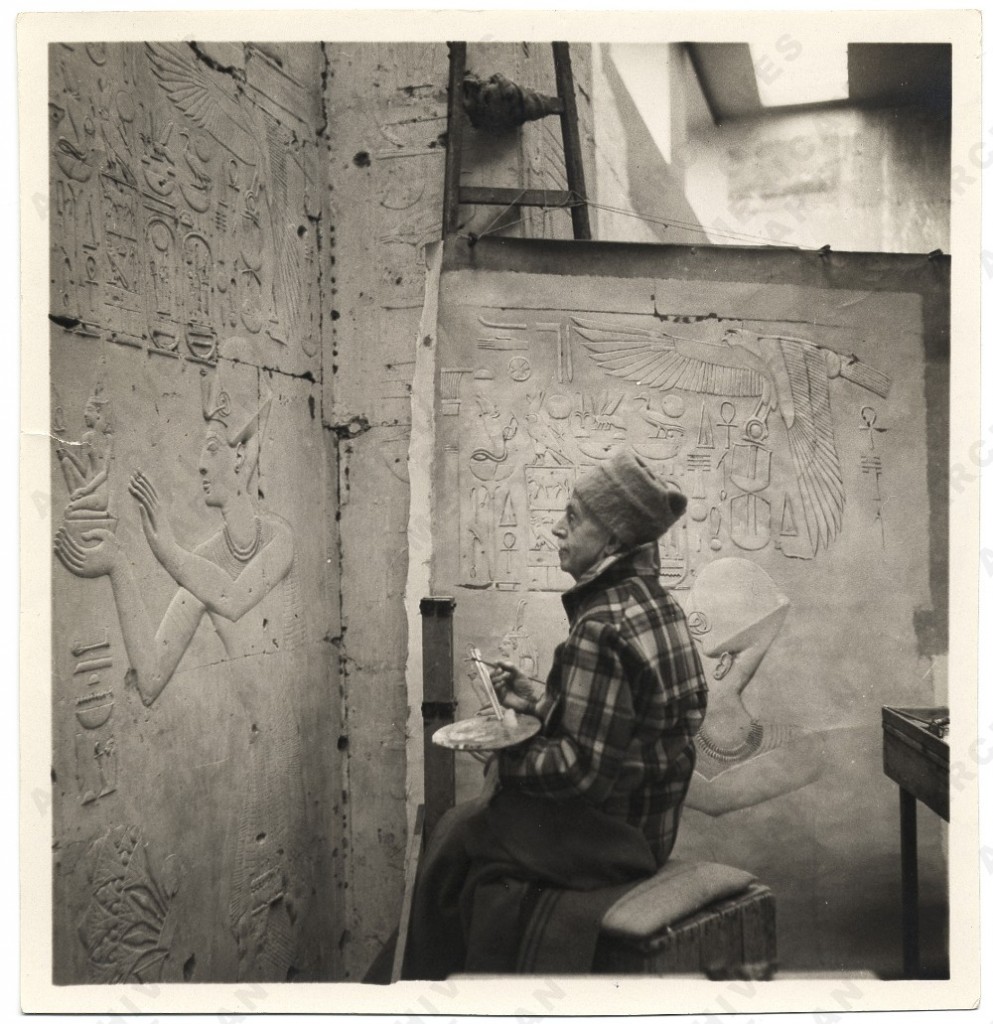
Joseph Lindon Smith painting, ca. 1947. Abydos, Egypt. (J L Smith papers, 1647-1965, bulk 1873-1965)
“A wonderful sunset ended Christmas day on the Nile and a full moon soon continued the beauty of travel in this fashion…” 1904

Traveling with his family, Lindon Smith sketched the Egyptian landscape and painted the art he saw in the tombs along the Nile.
You can see the diary page, above, on the left and the transcribing window on the right. That’s me typing my very first transcription sentence!
Smith talks endearingly of family members and the children he meets. He describes period Egyptian culture and transportation. He candidly records his work habits and progress. All of this would be valuable to a researcher.
“Grandpa made a sleigh to-day. for the babies out of a soap box. barrel staves and brains – and Joe and Shaihi dragged them about in the sand at sunset time. great fun for everyone” 1 Jan 1905
Through years of reading manuscripts in archives and indexing documents online, I have developed some decent handwriting deciphering skills. I couldn’t be happier to apply those to a cause that combines all of my interests: art, archives, and American history.
If you want to help, visit SI’s Digital Volunteering about page for more information.
Feature image: Joseph Lindon Smith (center) at Cairo Museum, 1947. (Archives of American Art Online Image Gallery)

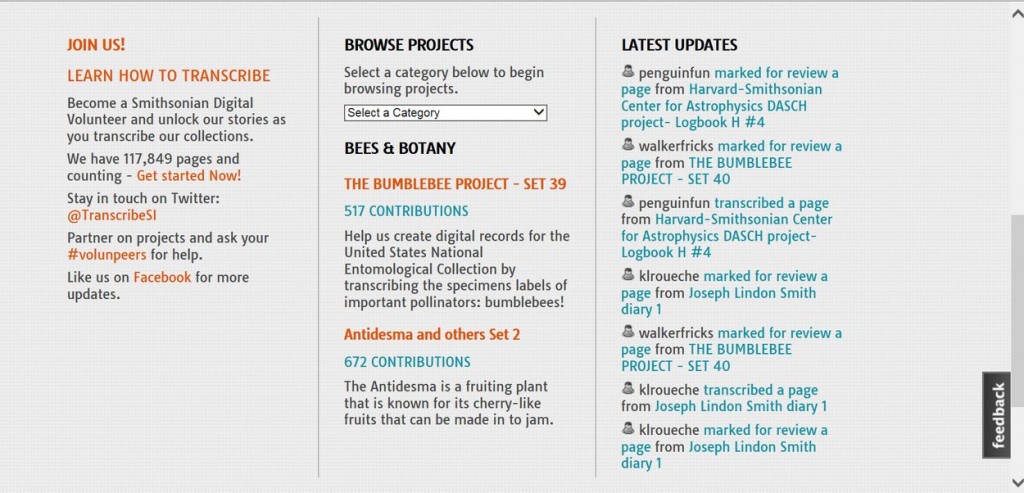

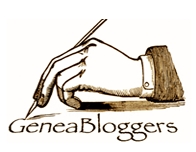
2 Responses to Archives: Smithsonian Calling